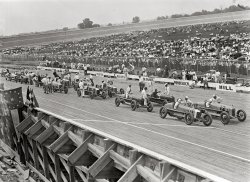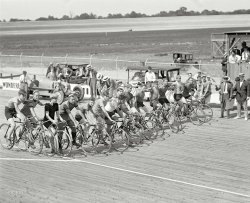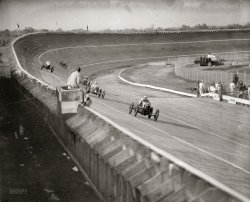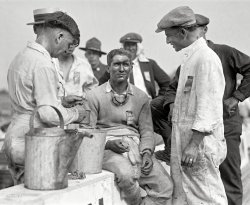
MAY CONTAIN NUTS

Search Shorpy
SHORPY ART

Framed or unframed, desk size to sofa size, printed by us in Arizona and Alabama since 2007. Explore now.
Join and Share
Ad-Free Shorpy
Shorpy is funded by you. Patreon contributors get an ad-free experience.
Learn more.

Recent comments
- Freeze Frame
- Texas Flyer wanted
- Just a Year Too Soon
- WWII -- Replacing men with women at the railroad crossing.
- Yes, Icing
- You kids drive me nuts!
- NOT An Easy Job
- I wonder
- Just add window boxes
- Icing Platform?
- Indiana Harbor Belt abides
- Freezing haze
- Corrections (for those who care)
- C&NW at Nelson
- Fallen Flags
- A dangerous job made worse
- Water Stop
- Passenger trains have right of way over freights?
- Coal
- Never ceases to amaze me.
- Still chuggin' (in model form)
- Great shot
- Westerly Breeze
- For the men, a trapeze
- Tickled
- Sense of loneliness ...
- 2 cents
- Charm City
- What an Outrage
- Brighton Park
Member Photos
The Shorpy
Print Emporium
Print Emporium
Search Shorpy
Search results -- 30 results per page
- Laurel Speedway: 1925
- July 11, 1925. Our third look at the lineup on Laurel Speedway's board track. National Photo Company Collection glass negative. ... Posted by Dave - 08/05/2012 - 1:11pm -

- Speedway Racers: 1925
- ... 1925. Prince George's County, Maryland. "Bicycle races at Laurel Speedway." National Photo Company Collection glass negative. View full size. ... Posted by Dave - 08/13/2013 - 3:26pm -

- Speed Racer: 1925
- July 18, 1925. Laurel, Maryland. "R.J. O'Connor, inter-city championship bicycle races, Laurel Speedway." National Photo Co. glass negative. View full size.
He does. ... Posted by Dave - 08/13/2013 - 3:34pm -
![Speed Racer: 1925 July 18, 1925. Laurel, Maryland. "R.J. O'Connor, inter-city championship bicycle races, Laurel Speedway." National Photo Co. glass negative. View full size.
He does."Who wears short shorts?"
BrakelessFixed gear -- no freewheeling. Great for fast track and stunt riding. Not so good for stopping. Get it wrong and over the handlebars you go.
FixieTrack racing bikes still have no brakes (and no freewheel device). The rider slows down by pedaling slower. They are still raced on wooden tracks, including in the Olympics. The tracks today are generally better finished and polished, since falls are common. Look at those huge splinters!
This fixed-geared arrangement has become very trendy lately, to the point it has a cutesy name: "fixie."
Handsome BrakelessAlso a handsome rake!
No Stopping HimYipes! There doesn't seem to be any braking mechanism on his bike. (Unless there is a foot brake that isn't apparent.) Also wondering what the sprocket lettering represents.
[BSA -- Birmingham Small Arms, a British maker of bicycles and motorcycles. - Dave]
Other points of interestNote the mold lines on the tires, and the axle hole through the crimped fork ends (rather than a slot).
HairodynamicAll that riding has sculpted his hair into a modern 2009 look!
BSABirmingham Small Arms, which began as a gun manufacturer, produced bicycles in the first half of the twentieth century. During WWII they made a folding bike for British Airborne paratroopers. After the war production switched to motorcycles, and in the 1950s and '60s "Beezers" were legendary racing bikes. They couldn't keep up with Japanese manufacturers, though, and by the early '70s the company was kaput.
Progress of another sortWhat housing block or shopping mall now covers the "Laurel Speedway"? Enquiring minds, etc.!
Fixie popularityWhen I was a courier in DC (89 to 97) only riders with major experience and major balls rode track bikes. It takes much more skill to stop quickly. Now every skinny jeans-wearing hipster rides a fixed gear bike, geared to stop easier and usually with a flat handlebar.
Of course a lot more people are riding bikes these days. Funny how all it took to get more people in this country to get back on bikes was super expensive gas and a serious recession.
Baltimore-Washington Speedwayhttp://www.wheelsofspeed.com/mdhist.html
Baltimore-Washington Speedway - Laurel, MD
1.125-mile wood oval (7/11/1925 - 9/25/1926)
The track, featuring turns banked at 48 degrees, was built by Jack Price in early 1925. The site is now the property of the Laurel Pines Country Club.
Stupid Bike TricksMy dad raced in San Jose in the 1930s. When I was a kid down on the central coast, he had a bike like this that he'd let us use. Long before it became fashionable to do crazy stunts on a bikes, we'd ride hell-bent for leather from the top of our street toward the beach. About halfway down, we'd stand up on the (absurdly skinny) seat. Usually we'd still hold onto the handlebars, but sometimes we'd stand all the way up for part of the ride and then jump back down to stop. It's amazing that any of us made it to adulthood.
I Agree WholeheartedlyDefinitely a handsome rake!
Pure rideI still have my track bikes from the 70's. Pure ride - who needs 20 gears? Back in the day, our jerseys and chamois were wool, we knew how to repair our own bikes, nailed our cleats on and rode because we loved to. And we laughed at those who spent a fortune on a bike and could not ride a straight line. Even more fun was zipping past some turkey on a road bike while on a track bike and doing it in the hills of the SF Bay Area.
(The Gallery, Bicycles, Natl Photo, Sports)](https://www.shorpy.com/files/images/14014u.thumbnail.jpg)
- Splinter Alley: 1925
- July 11, 1925. Another look at the lineup on Laurel Speedway's board track. National Photo Company Collection glass negative. ... Posted by Dave - 08/26/2011 - 3:22pm -

- Board Track: 1925
- July 11, 1925. "Auto races at Laurel, Maryland." The 1⅛-mile wooden oval at Laurel Speedway. National Photo Company glass negative. View full size.
... Posted by Dave - 09/04/2012 - 4:56pm -
![Board Track: 1925 July 11, 1925. "Auto races at Laurel, Maryland." The 1⅛-mile wooden oval at Laurel Speedway. National Photo Company glass negative. View full size.
Sibling rivalryLooks like both Ralph and John DePalma were racing that day.
Black BoxesFor a good while I kept wondering what were those neatly arranged squares in the outfield. I guess I'm slow on the uptake.
Notice the Parking Lot?Every car in the lot is black. Finding your car after the race must have been hell!
And sitting in the stands squinting into the glare from all those skimmers......
A Sea of Menall looking toward the track, and one lone woman with a parasol looking toward the camera. Interesting composition.
Sharing a memory...There was a graphic design studio I worked in for a time and it (rather oddly) had a race car set in the middle of the office of the same type in the photos. I recall one office party where I (accompanied by my beer) finally worked up the gumption to climb into it. I remember sitting there, hands on the wheel, and just letting my mind wander back to a scene similar to the one in this photo.
The car was much larger then I would have imagined.
Amazing Uniformity of HatsWhat's with all the straw hats? It must have been the style in 1925 ... but still, did 98% of the men of the time wear the same kind of hat? It's really kind of freaky.
[Check out this photo. - Dave]
Hat DayMust have been Hat Day at the track. You know, they give away free hats. Also, the banking in turn 4 is not supported by dirt. It is actually up on supports , which you don't see anymore.
To what degree?That has to be the most steeply-banked track I've ever seen! The corners appear to be way steeper than Daytona or Talladega. I wonder just what the degree of banking actually was.
[48 degrees. - Dave]
HiddenAnd not a Marx Brother in sight? Not even a Harp!
Sea of HatsSkimmers or boaters were the hat of choice, much like ballcaps today. You can still get one, I love mine.
Newspaper BrimsPlenty of folks have extended the coverage of their hats with sheets of newspaper.
That's a lotta woodThe idea of a wooden racetrack for cars is incredible! It takes a hefty underlying support structure to keep the surface boards in place. Even with that the pounding of the racecars would loosen the nails and the resulting clickity-clack sound would have been very loud. I remember that effect from some wooden bridges we used to have around here. Unless all the wood was treated with creosote, the usual preservative back then, the whole track might rot away in a few years. Wonder how many years the track did last?
Why wood?Why was it made of wood?
[It was a relatively cheap way to build a banked racecourse. Board tracks were quite popular in the early part of the century. - Dave]
Deadly SplintersBoard tracks were used for motorcycle racing at the time as well and taking a spill on the lumber was a nasty experience.
LostHave you seen my dad? He was wearing a white shirt and a straw hat.
Quite a lineupRalph was the only DePalma racing that day. The partially-obscured "DeP___a" was a misspelling of Pete DePaolo's name. Pete was Ralph's nephew, the winner of the 1925 Indy 500, and also the winner of this race.
A list of the results can be found here. Interesting to see so many jackets on a day marked by "extreme heat."
Board track racer Jim DavisA few years back I had the pleasure of meeting long retired board track racer Jim Davis, who raced motorcycles for the Indian Company beginning in 1916. He told stories of running over 100 mph on the boards and having splinters thrown up by other bikes with such force that they would pierce the protective leather gear. At the end of one race as he slowed to a stop he discovered he couldn't remove his foot from the peg of his bike and found that a large splinter had pierced the leather of his boot and wedged itself between parts of the bike. Fortunately it somehow missed his foot. It was all insanely dangerous but when you were 17 years old and could make $25 a week plus expenses and prize money, why not?
Mr. Davis was a very polite man, friendly, and could tell racing stories 75 years after they happened like they happened last week.
Finish LineThe results linked to in an earlier comment are interesting. All cars save one were a Duesie or a Miller and the average speed for the 250 miles was around 124 mph. Very impressive considering the venue! I wonder if it was AAA sanctioned.
A board track legendNeedless to say, the elaborate framework of a board track allowed ample opportunity for boys to climb around under the track. A legend goes that during a race at Beverly Hills, a driver came into the pits pale and shaking. When asked what's wrong, he said "There has been a crash and I saw the guy's head bouncing down the track!"
He was told there had been no crash. What he saw were local urchins getting the best view of a race imaginable; through holes in the boards. They would duck down as the cars passed and then pop back up as they cleared.
Then and NowHere is the track today, overgrown but still recognizable:
View Larger Map
Woodpeckers not allowedThe official name of this track is The Baltimore-Washington Speedway and all races ran there were AAA sanctioned. It had 48 degree banked corners and was built by Jack Prince. However it was very short loved in that it was operational between the June 1925 and the September 1926. The first board track was built at the Los Angeles Coliseum Motordrome in 1910. The design was based on the velodromes still used for bicycle racing.
Regarding the dress code of the day, considering that these were the days when men wore not only hats, but suits and ties to the movies, to ballgames, horse races and in this case, to auto races, it was expected to be a very hot day at the event thus the white dress code and straw hats.
As a racer, the topic of board tracks has been one of my studies for several years all of which had some amazing historical value. That said, in my opinion, the board track in San Francisco was the most beautiful of all with a significant amount of historical value. It was built overlooking San Francisco to coincide with the 1915 Pan Pacific International Exposition (World's Fair), where the 1915 Vanderbilt Cup race was run. I have some beautiful photos of them and the cars.
CamerasMakes you wonder what ever happened to the pictures they are taking down in the race lane, and if, some time in the future, Dave will find and post them.
[A clever ploy. More here and here. - Dave]
Google Maps imageI am fascinated by the Google Maps image posted below. I'd love to get into that property just to look around and walk the old layout and stand where such an amazing track was. Sadly, I'm in Arizona so it's not likely to happen.
Hats and Plank roadsI can also attest to the terrific comfort of a straw boater. I got an antique boater recently (ca 1930s) and it's amazing how shady cool and comfortable they are. And yes, just about every man in America wore one. May 15 was the traditional "Straw Hat Day," when straws were "officially" sanctioned to be worn.
Regarding the wooden track, this was also the era of plank roads. In an era when wood was tremendously abundant, miles and miles of highways were paved with wood. Even in Brooklyn, Coney Island Avenue was originally called Coney Island Plank Road.
Laurel board trackWhen I was a kid, we used to ride our bikes in the woods there. Unfortunately, the current image above does't show any remains at all of the old track. 4 or 5 years ago they cleared the land. Now its just a grass field. About 10 years ago, when we found the track, we thought it was a road. We road our bikes on it and and discovered it was huge oval. Since the track was all sand, we thought it was once part of the horse track. Since the horse track is across the street(brock bridge rd), it only made sense to us. Wish it was still there since I now know what it is.
(The Gallery, Cars, Trucks, Buses, Natl Photo, Sports)](https://www.shorpy.com/files/images/27449u.thumbnail.jpg)
- Grease: 1925
- "Bob McDonough, Laurel race." On his ribbon: "Baltimore-Washington Speedway DRIVER. Inaugural Opening. Saturday July 11, 1925." View full size. ... Miami, Omaha, and Tacoma, plus Kansas City, Missouri; Laurel; Salem, New Hampshire; Sheepshead Bay in New York.
Most were ... Posted by Dave - 10/22/2012 - 10:54am -
























